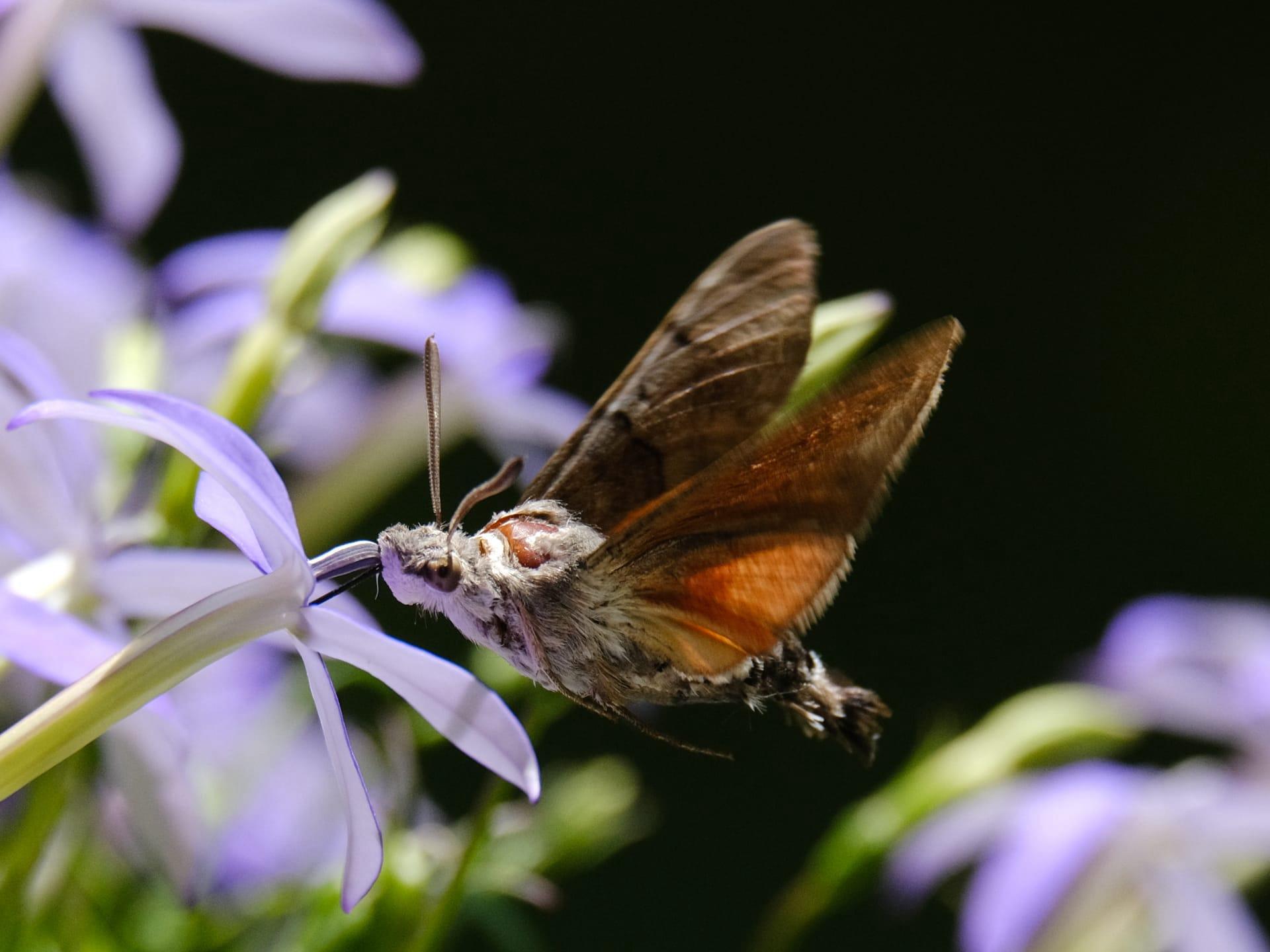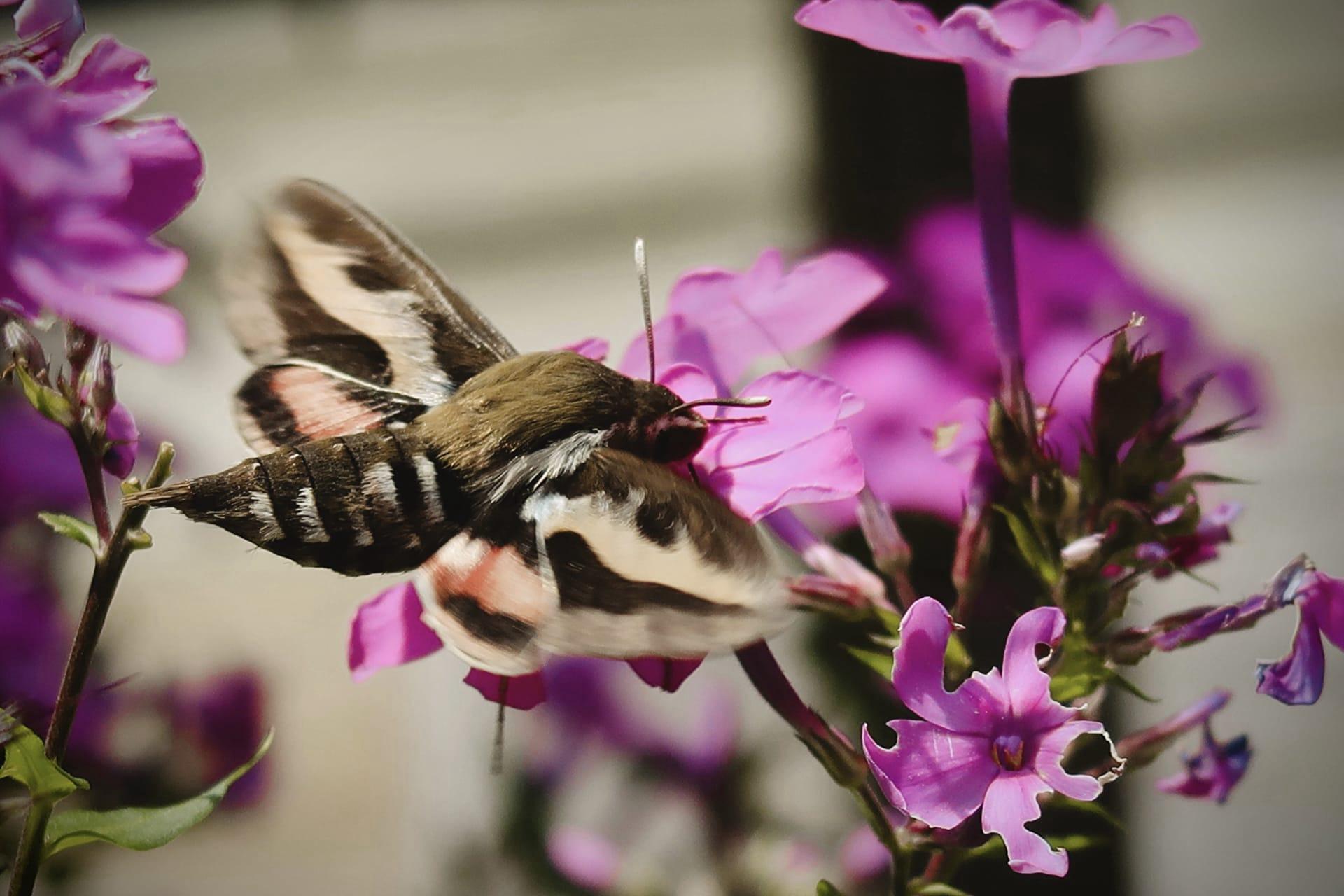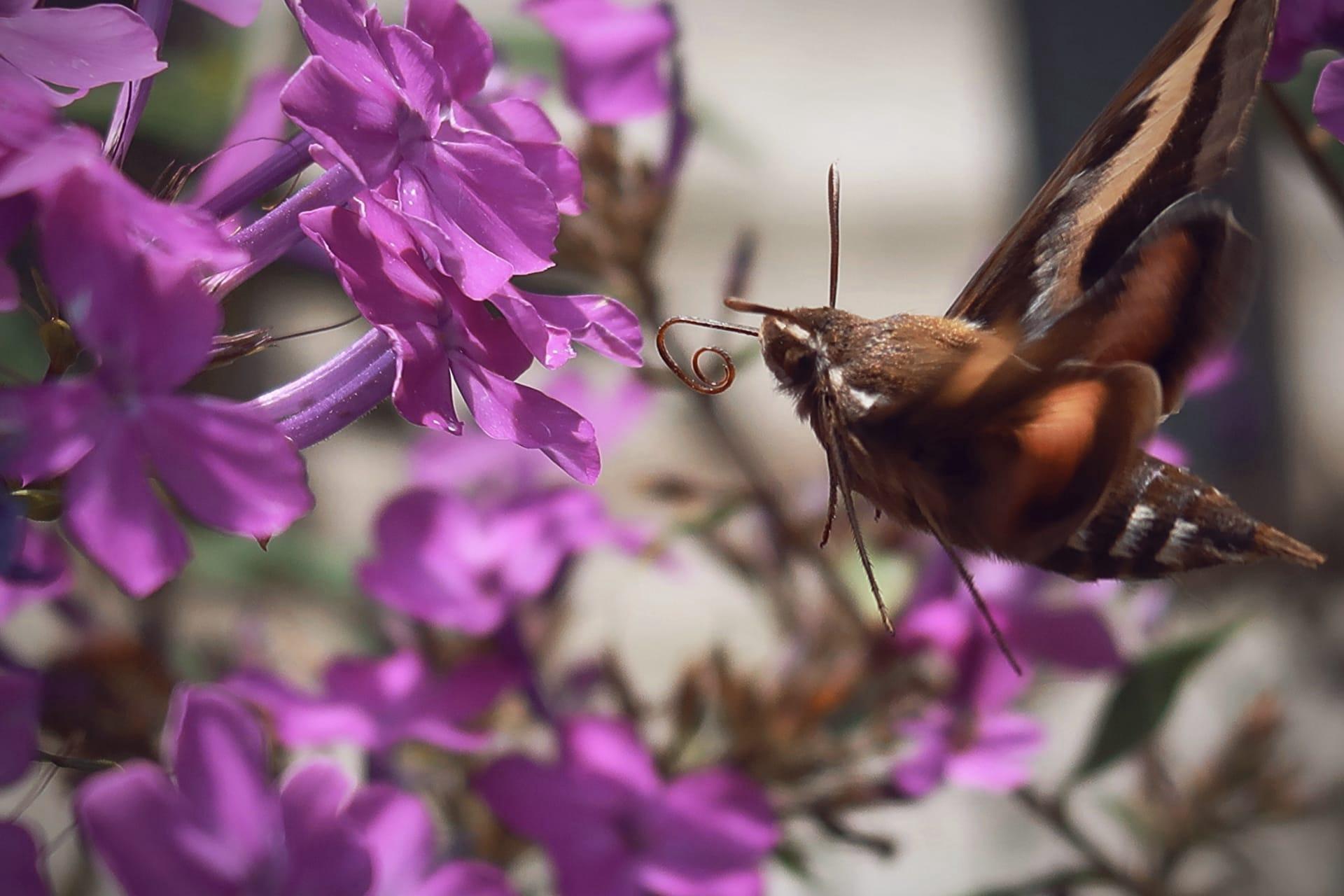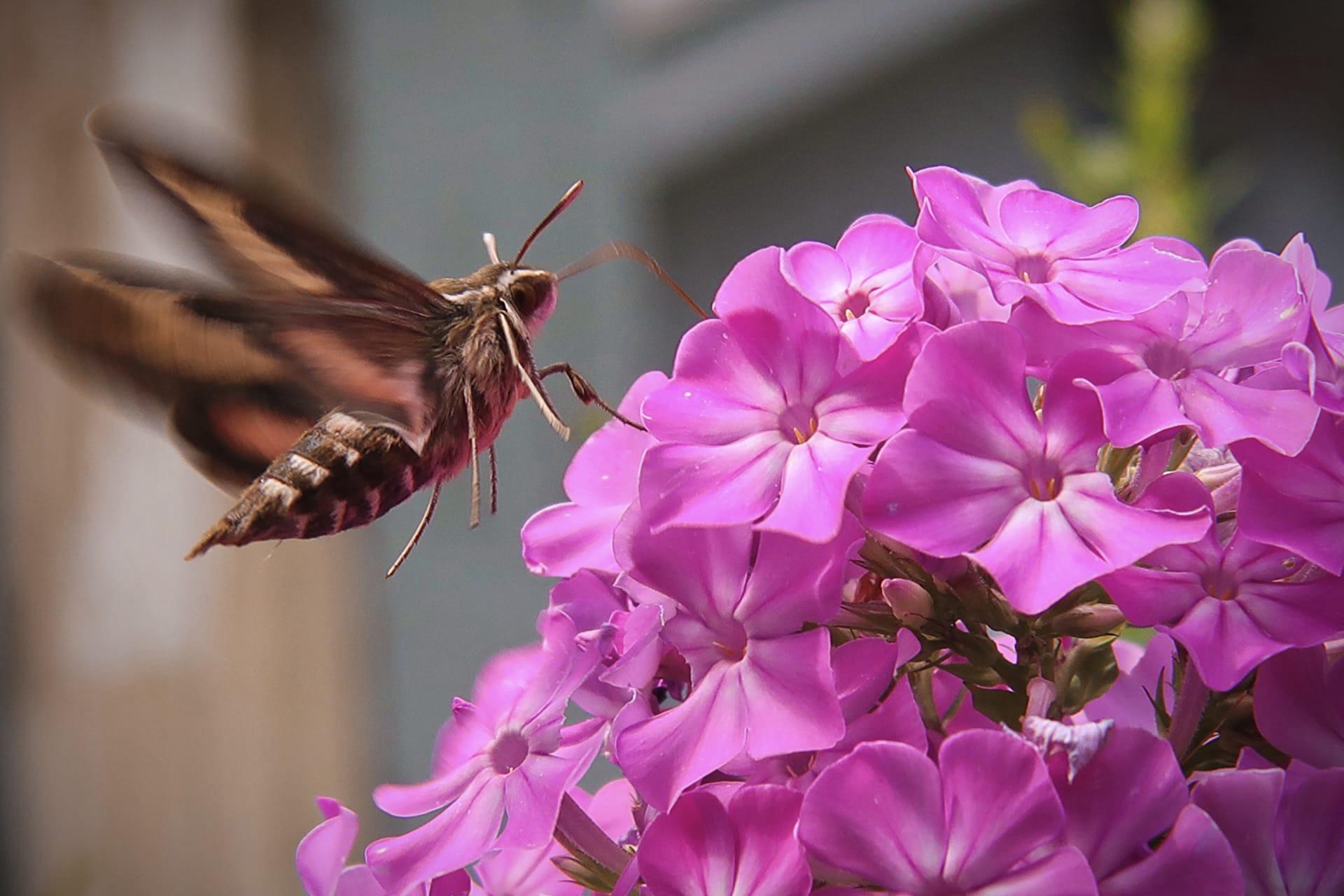Hummingbird Moth
- Home /
- Mini Encyclopedia /
- Animal /
- Hummingbird Moth
1
The Hummingbird Moth, scientifically known as Hemaris thysbe, belongs to the Sphingidae family, which is a group of moths known for their robust bodies and rapid wing flapping. They have a wingspan that typically ranges from 1.6 to 2.4 inches (40 to 60 millimeters) and are noted for their colorful, often iridescent wings and bodies. Their unique appearance is characterized by clear or translucent wings with borders and bodies that resemble those of a hummingbird, hence the name.
Geographically, the Hummingbird Moth is widely distributed across North America, particularly in the United States and Canada. These moths are commonly found in meadows, gardens, and forest edges where they prefer temperate climates. Their range extends from Alaska and Canada in the north, through the United States, and down into Mexico. They are seasonal migrants in some northern parts of their range, moving southward in late summer and early fall.

2
Question: Is the Hummingbird Moth a bird or an insect?
Answer: Despite its bird-like appearance and behavior, the Hummingbird Moth is indeed an insect. It is a moth belonging to the Sphingidae family. Its resemblance to a hummingbird is a remarkable example of convergent evolution, where unrelated species evolve similar traits. The Hummingbird Moth's bird-like hovering and feeding behavior, along with its rapid wing movement, create a humming sound similar to that of hummingbirds, often leading to confusion.

3
The Hummingbird Moth employs several survival strategies to thrive in its environment. Its mimicry of a hummingbird is not just a visual trick but also a defense mechanism against predators. By resembling a bird, the moth can avoid common predators that prey on insects. Additionally, their rapid wing movement and agility in flight make them less likely to be caught.
Another survival strategy is their nocturnal and crepuscular behavior, which helps them avoid daytime predators. They are adept at finding nectar sources in low light conditions, using their long proboscis to feed while hovering. This ability to feed on the wing allows them to access a wide variety of flowers and plants, making them highly adaptable to different environments.

4
In the ecosystem, the Hummingbird Moth plays a vital role in pollination. As they move from flower to flower feeding on nectar, they inadvertently transfer pollen. This aids in the reproduction of a wide variety of flowering plants, contributing to the biodiversity of their habitats. Their role as pollinators is especially crucial in maintaining the health and balance of meadows and garden ecosystems.
Additionally, the Hummingbird Moth serves as a food source for other species. Birds, bats, and larger insects sometimes prey on these moths. Their presence in the food chain highlights the interconnectedness of species within an ecosystem and underscores the importance of preserving diverse habitats for the survival of various creatures, including the Hummingbird Moth.

5
Film: "Winged Tapestries: Moths at Large" is a notable documentary from the United States, released in 2012. This film offers an intimate look at the world of moths, including the Hummingbird Moth. It showcases the stunning diversity and adaptability of moths, highlighting their roles in various ecosystems and their unique survival strategies.
Book: "The World of Moths" by David Carter, published in the United Kingdom in 2000, is an extensive guide that delves into the intriguing world of moths. It includes detailed descriptions and images of various species, including the Hummingbird Moth, offering insights into their behavior, life cycles, and habitats.
Book: "Moths: A Complete Guide to Biology and Behavior" by David Lees and Alberto Zilli, published in the United States in 2019, provides an in-depth look into the biology and behavior of moths. This book includes a section on the Hummingbird Moth, detailing its unique characteristics and its role in the ecosystem, making it a valuable resource for enthusiasts and researchers alike.